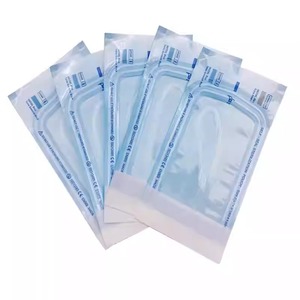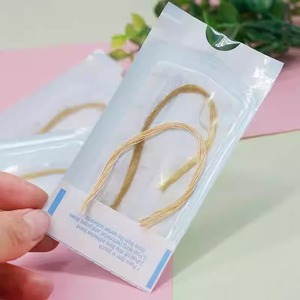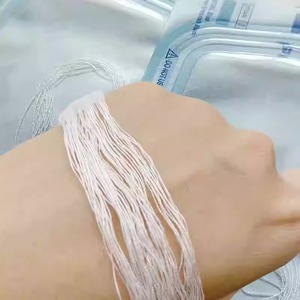(152 products available)












 Ready to Ship
Ready to Ship





























































































































































































Many threads are used for lifting the skin in different areas of the face. These facelift threading varieties include:
Picking the correct thread for a facelift is vital to getting good results. Here are some key things to consider when choosing threads for a facelift.
Desired Results
First, think about what results are wanted. Threads with cones may provide a stronger lift in some areas, like the cheeks, than threads without cones. But, threads without cones may create a more natural-looking lift. Consider which look - natural or stronger - the patient prefers.
Areas to be Treated
The areas needing treatment also matter. Some threads are better for lifting the jawline, while others work well to raise the eyebrows. Make a list of areas needing improvement and research which threads provide the best results.
Thread Composition
Consider the thread material. PDO threads are absorbed in 4-6 months, PLLA threads last longer, and PCL threads provide the longest results. Think about how long a lift is desired and choose a thread accordingly.
Thread Quality
Not all threads are the same quality. Choose threads from reputable companies to ensure safety and effectiveness. Thread quality impacts ease of insertion, patient discomfort, and overall results. Higher-quality threads have smoother insertions and better lifts.
Cost
Budget is always a consideration. Higher-quality threads from reputable companies cost more but are better in the long run. Obtain quotes from multiple clinics using different threads to compare prices. Remember, thread quality impacts results, so don't choose solely based on cost.
Clinician Experience
The clinician's experience is also important. They need to understand how to properly use the chosen thread for optimal results. Ask the clinician how many facelift procedures they have done and their experience level with the specific thread being used. A skilled clinician will get better results, even with a lower-cost thread.
Using and caring for facelift threads is a crucial factor in obtaining good results from the procedure. While it is advisable to follow the medical professional's advice on aftercare, below is a general outline of how to use and what to avoid after the procedure.
Safety is a major concern when it comes to facelift threading. This cosmetic procedure uses dissolvable threads to lift and tighten facial skin. Here are some safety protocols to ensure patients are safe from infections and complications.
Facial Tightening and Lifting:
Thread lifting can help with the drooping of the skin on the face and neck by pulling the skin tight and elevating it. It results in a more youthful and pleasant appearance.
Wrinkle Reduction:
Facelift threads can smooth out fine lines and wrinkles by tightening the skin and pulling it, thereby lessening the visibility of aging signs and improving skin texture.
Volume Restoration:
These threads can be used to raise and reposition facial fat pads that tend to drop with age, thus helping to restore lost volume in areas such as the cheeks and jawline for a plumper and more natural look.
Non-surgical Brow Lift:
Threads can be inserted in the brow area to lift and firm the brows, thus achieving a minimally invasive brow lift that reduces the look of sagging brows and improves facial expressions.
Minimal Invasiveness:
Thread Facelifts are minimally invasive procedures that insert threads into the skin through tiny punctures. This is far less invasive when compared to traditional facelift surgery.
Localized Anesthesia:
The procedure is performed under local anesthesia, which means patients remain awake but feel no pain in the area being treated. This ensures a comfortable experience for the patient.
Short Procedure Time:
Thread facelift procedures can generally be completed within 30 to 60 minutes, making them quick and convenient options for patients looking for efficient treatment.
Immediate Results:
Patients can see visible improvements in facial contour and tightness right after the procedure, with results continuing to improve as swelling subsides and collagen builds up over time.
Biodegradable Threads:
Most facelift threads are made with biodegradable materials that the body can absorb over time. This ensures long-term lifting effects without foreign material remaining in the body.
Biodegradable Materials:
Threads are designed with materials such as polydioxanone (PDO), poly lactic acid (PLA), or polytetrafluoroethylene (PTFE) so that they can be easily absorbed by the body without the need for thread removal surgery.
Barbs or Hooks:
Threads are designed with small barbs or hooks along their length, allowing them to grasp and lift the skin tissue effectively.
Various Thread Types:
There are many types of facelift threads available for different lifting effects and patient needs, including smooth threads for subtle lifting, knotting threads for added support, and sculptra threads that stimulate collagen production.
Fine Gauge Threads:
Facelift threads are of a very fine gauge, making them possible to insert under the skin with minimal discomfort and damage to the tissue, thus promoting safer and more comfortable procedures.
Q1: What are the benefits of facelift threading?
A1: The benefits of facelift threading include a minimally invasive procedure that improves the appearance of the face and neck by tightening and lifting the skin. It enhances facial contours and can be done in the clinic under local anesthesia. It requires minimal recovery time, and the results can last from one to three years.
Q2: What are the risks of facelift threads?
A2: The risks of facelift threads include infection, scarring, wrinkles, irregularities, and complications related to anesthesia. Thread lifting is a relatively new technique, and there may be limitations in correcting sagging skin and a lack of long-term evidence regarding its effectiveness.
Q3: How long does a facelift last?
A3: Most thread lifts can last one to three years, depending on the type of threads used and the extent of the lift.
Q4: Is facelift threading painful?
A4: Many patients report only mild discomfort during and after the procedure, which can be managed with over-the-counter pain medications.
Q5: Who is a good candidate for a thread facelift?
A5: Good candidates for a thread facelift are individuals with mild to moderate skin laxity who desire a tighter and younger-looking facial skin. They should have realistic expectations about the procedure and outcomes and not have any active skin infections or allergies.